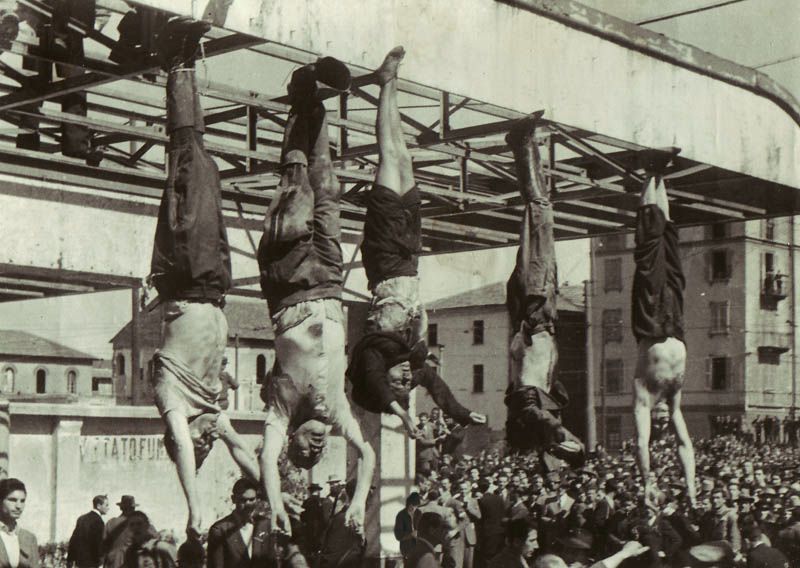Our platoon was probably the only Allied soldiers to witness the final degradation of Italian dictator Benito Mussolini.
-
June/July 2002
Volume53Issue3
In December of 1942 I was drafted and sent overseas to Oran, Algeria, where I was assigned to the 91st Cavalry Reconnaissance Squadron. The eyes and ears for the troops, we rode in jeeps, armored cars, and light tanks, scouting the numbers and supplies of the enemy forces. The 91st did so well that Gen. George Patton insisted we do his reconnaissance all through Africa and Sicily. At the end of the fighting, the 91st had a record of 341 combat days.
After leaving Sicily, we struggled up the boot of Italy to Salerno, Cassino, and the Apennines. In March of 1945, near the little town of Vergato, I was too chummy with an exploding mortar shell and received a Purple Heart. I still set off metal detectors each time I pass through airport security.
After years of fighting uphill, taking one mountain range only to find a bigger one behind it, on April 20,1945, we spearheaded into the flatlands of the Po Valley and were the first unit to cross the Po River. From there we headed for Milan. Our 12-man unit consisted of two jeeps, an armored car, and a light tank. As we entered the city, on April 29, we were apprehensive, not knowing whether we would be greeted with artillery, mortar, or small-arms fire. Instead we were met by a joyous crowd and showered with flowers. Yelling “Mussolini kaput, Mussolini kaput!” the crowd paraded us through the town into what appeared to be its central square. There, at an abandoned gas station, hanging by their feet, were Mussolini, his mistress Claretta Petacci, and five of his war ministers.

In July of 1943, Mussolini had been stripped of power and arrested. German paratroopers liberated him and kept him under protection in northern Italy. On April 27, 1945, Italian partisans captured Mussolini and his cohorts at Lake Como as they were trying to escape into Switzerland. The following day all seven were shot in the back of the head and their bodies brought to Milan, where Mussolini had begun his rise to power some 26 years earlier. The Italian people now considered Il Duce and his cohorts traitors, and eagerly gathered to pelt the corpses with rocks.
When we arrived at this joyous yet macabre scene, our lieutenant radioed headquarters to report the execution of these Hitler cronies. This was the first the Allies had heard of Mussolini’s death, and headquarters immediately dispatched a reporter and a photographer to parachute into Milan. As the photographer landed, however, he fell on his camera, smashing it.
On my way into the city I had picked up a camera from a dead German officer, and I used it to shoot several pictures at the gas station. When I heard about the photographer’s bad luck, I gave him my camera. I must also have given him my address, because when I arrived home after the war, there waiting for me was a packet with several copies of the pictures I had taken.
Aside from the photographer and reporter, I believe that my platoon of 12 men were the only group of Allied soldiers to witness Mussolini’s final degradation. The corpses hung in ignominy for half a day before being cut down and taken back into the mountains for burial. The partisans wanted to avoid demonstrations by the few remaining Mussolini supporters.
The following day, April 30, 1945, Hitler committed suicide in Berlin; a week later the war in Europe ended. The photographs of Mussolini and his compatriots were published worldwide. Even without them, the images of that day would have been forever etched in my memory.

